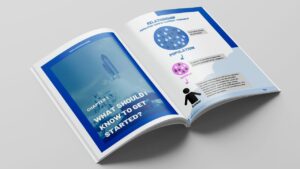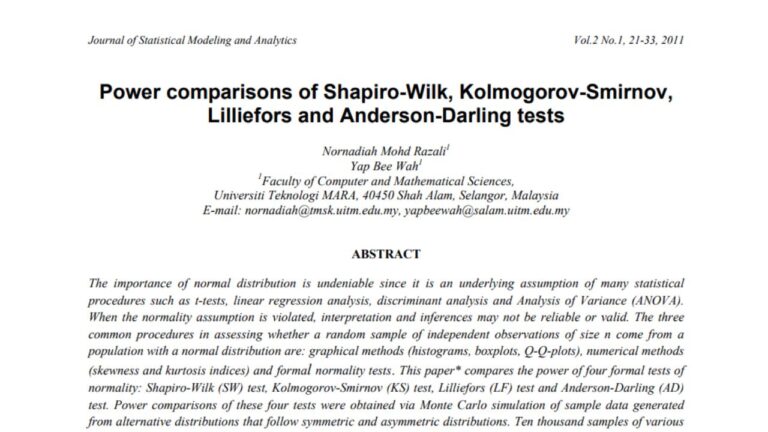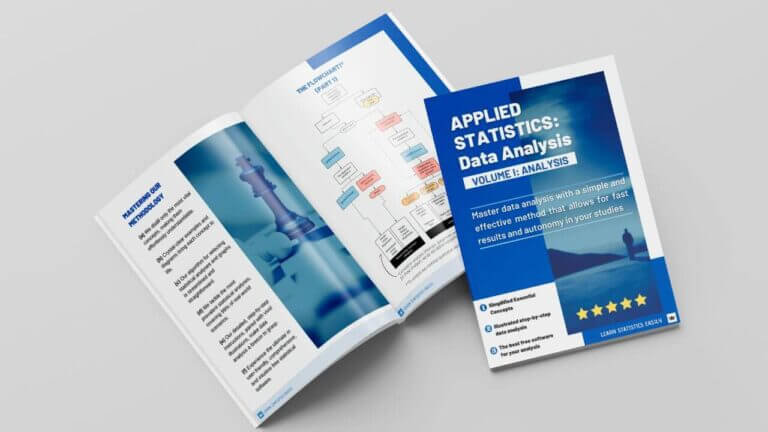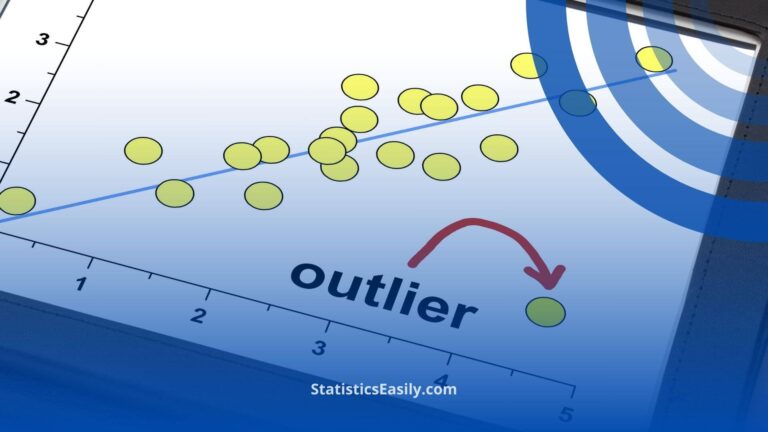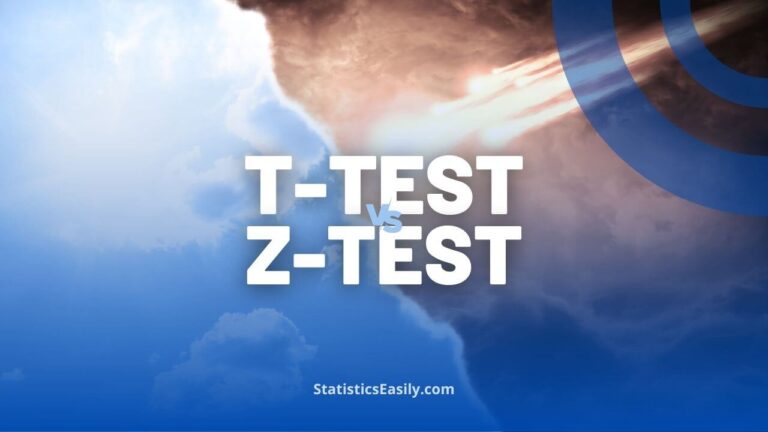Which Normality Test Should You Use?
You will learn which normality test is the best and most appropriate for various data analysis situations.
Highlights
- Normality tests assess whether a dataset is normally distributed, a fundamental assumption in many statistical tests.
- In Razali and Wah’s study, the Shapiro-Wilk test exhibited the highest statistical power among the four tests.
- According to the study, the power of all four tests increased with larger sample sizes.
In statistical analysis, normality tests are crucial for determining if a dataset follows a normal or Gaussian distribution — a fundamental assumption in many statistical tests and methods.
Normality tests help validate these assumptions, ensuring the appropriate application of statistical methods and accurate, reliable inferences and predictions.
Conducting a normality test allows researchers and data analysts to ascertain if their data meet the normality assumption and whether parametric tests, which rely on this assumption, are suitable.
When data deviate from the normal distribution, non-parametric tests may be more appropriate, which makes fewer assumptions about data distribution.
This blog post reports findings from a study comparing the statistical power of four normality tests — it provides guidance for selecting the most appropriate test for specific datasets.
💪 Become a Data Analysis Pro in No Time
Discover the Game-Changing Techniques Inside Our Ultimate Guide!
Overview of Normality Tests
This section will briefly overview the Shapiro-Wilk, Kolmogorov-Smirnov, Lilliefors, and Anderson-Darling normality tests, discussing their underlying assumptions and methodologies.
Shapiro-Wilk Test: The Shapiro-Wilk test is widely regarded as one of the most powerful normality tests. Developed in 1965 by Samuel S. Shapiro and Martin B. Wilk, it is specifically designed for small to moderate sample sizes. The test calculates a W statistic, which compares the observed data to the expected data if it follows a normal distribution. A small W value indicates that the data deviates significantly from a normal distribution.
Kolmogorov-Smirnov Test: The Kolmogorov-Smirnov (K-S) test is a non-parametric test that compares the empirical distribution function of a dataset to a specified theoretical distribution, typically the normal distribution. The test calculates the maximum difference (D) between the two cumulative distribution functions. A large D value indicates a significant deviation from normality. One limitation of the K-S test is that it is less sensitive to deviations in the distribution’s tails.
Lilliefors Test: The Lilliefors test, an extension of the Kolmogorov-Smirnov test, was developed by Hubert Lilliefors in 1967. It is designed for small samples when the population parameters, such as the mean and standard deviation, are unknown. The test modifies the K-S test by estimating these parameters from the sample data, resulting in a more accurate normality assessment for small samples.
Anderson-Darling Test: The Anderson-Darling test, developed by Theodore Anderson and Donald Darling in 1952, is another powerful normality test. Like the K-S test, it compares the empirical distribution function of a dataset to a specified theoretical distribution. Still, it places more weight on the distribution’s tails. This test calculates an A^2 statistic, with larger values indicating a greater deviation from normality.
Study - Power Comparisons of Normality Tests
In the article “Power Comparisons of Shapiro-Wilk, Kolmogorov-Smirnov, Lilliefors, and Anderson-Darling Tests” by Nornadiah Mohd Razali and Yap Bee Wah, the main objective is to compare the statistical power of the four normality tests: Shapiro-Wilk, Kolmogorov-Smirnov, Lilliefors, and Anderson-Darling.
The study seeks to determine which test performs best under various conditions and sample sizes, ultimately guiding researchers and data analysts in selecting the most appropriate normality test for their specific datasets.
Methodology: Razali and Wah conducted extensive power simulations using Monte Carlo techniques to compare the performance of the Shapiro-Wilk, Kolmogorov-Smirnov, Lilliefors, and Anderson-Darling tests. The simulations considered varying sample sizes and different types of data distributions. The statistical power of each test, defined as the probability of the correct rejection of the null hypothesis when it is false, was analyzed and compared across the various scenarios.
Findings: The study found that the Shapiro-Wilk test generally exhibited the highest statistical power among the four normality tests, making it the most effective test for detecting deviations from normality across various situations. However, remembering that the power of all four tests increased with larger sample sizes is essential.
Conclusion
Normality tests play a critical role in statistical analysis, as they help determine the suitability of parametric tests that rely on the normality assumption.
The choice of the proper normality test can significantly impact the reliability and validity of the statistical analysis.
Based on the study by Nornadiah Mohd Razali and Yap Bee Wah, the Shapiro-Wilk test generally demonstrates the highest statistical power for detecting deviations from normality.
Discover FREE samples from our newly released digital book and unleash your true potential.
Dive deep into advanced data analysis techniques, master the art of determining optimal sample sizes, and learn to communicate results effectively, clearly, and concisely.
Click the link to uncover a wealth of knowledge: Applied Statistics: Data Analysis.



